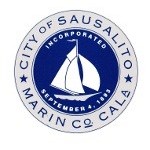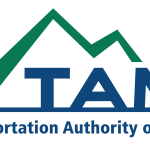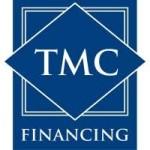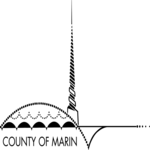Recent News
With a positive economy and high employment numbers dispelling fears of a recession, Marin Economic Forum members say the time is right to turn the spotlight on creating more jobs in the county.
The approximately 120 people who attended the annual Forecasting the Future 2024 program held at the College of Marin’s Indian Valley campus earlier this month included business, government, nonprofit and education leaders.
“Marin County has become an economic development leader based on the board of supervisors five-year Economic Vitality Strategic Plan developed in 2022 followed by the appointment of a full-time economic vitality coordinator in December,” said Mike Blakeley, CEO of the Marin Economic Forum.
“Our county’s economic fundamentals are strong, but most people don’t feel that way based on news in January of record layoffs in the Bay Area along with continuing high prices and interest rates along with reports that some states, such as Texas and Arizona, keep wooing away our firms.”
(read more…)Inflation and the high cost of living still top the list of major concerns consumers face today in the wake of tight monetary policy. But this is already beginning to change with lower prices for appliances, gasoline, furniture, and used cars — as well as due to the possibility of interest rate cuts affecting borrowing costs coming into view. At the same time, the labor market remains strong, calming fears of a pending recession.
The state of the national and local economy was the topic at December’s Marin Economic Forum. The forum is designed to recap 2023 and offer a preview of what to watch for in 2024. Economic Forum CEO Mike Blakeley hosted the online briefing and introduced Sonoma State University Economist Dr. Robert Eyler who provided an overview of current realities while also offering a cautious, but positive forecast for the year ahead.
(read more…)A plan for helping grow Marin’s economy and recover from the COVID-19 pandemic was approved by county supervisors Tuesday.
“I’m excited to present the first ever, long-term economic plan for the county of Marin,” County Administrator Matthew Hymel said.
The “Marin Economic Vitality Strategic Plan” was paid for with a $133,000 federal grant and a little over $32,000 in county money. It was created over a 10-month period by the Marin Economic Forum with the help of the consulting group James Gollub Associates.
The Marin Economic Forum is a nonprofit, public-private partnership designed to foster local economic growth. It is funded by the county of Marin, contributions from businesses and individuals, and revenue generated from economic reports prepared by the forum.
(read more…)On Aug. 23, the Marin County Board of Supervisors unanimously adopted the “Marin County Economic Vitality Strategic Plan.”
It represents the first economic strategy in county history and comes at a crucial time as we recover from the coronavirus pandemic and manage the uncertainty of the economy over the next few years, while trying to ensure the quality of life Marinites have come to know and expect.
But there are other reasons the strategy is important to our county. As is noted in the extensive background analysis and stakeholder interviews that shaped the plan, Marin’s economy has both longstanding and more recent issues that have not traditionally been viewed as “economic” issues, nor have their solutions.
Let’s start with child care, where a lack of available slots versus demand persists. It forces many parents into a no-win choice of staying home to care for children or pay high costs for care, which can offset income from working.
(read more…)When Ultragenyx cut the ribbon on a newly constructed research facility designed to study rare diseases, it was no accident that it chose the burgeoning cornerstone of biomed companies in northern Marin County.
The life sciences giant has planted its footprint with now six buildings spanning more than 150,000 square feet in the Novato industrial park deemed a biotech center. The park also houses BioMarin — another biomed company fighting dreaded illnesses that plague children and adults through research and development.
The city of Novato has opened the door for more companies like Ultragenyx to do business. During its May 24 City Council meeting, it approved Planning Commission’s recommendation to allow for another 300,000 square feet for such ventures on the 200-acre campus west of U.S. Highway 101 by changing the park’s master plan and the city’s general plan. It also has enhanced the height threshold to 68 feet.
(read more…)When COVID first hit and the Marin economy was shut down, stories of business closures started to trickle in. Some of the businesses served the local community for over 20 years but met a premature end.
In economic terms the Marin Economic Forum observed that businesses were not “resilient.” In other words, they didn’t have resources to withstand the economic shock. In human terms, we knew it simply seemed unfair.
While this story played itself out across the country, another story emerged: business license applications were soaring, averaging almost 400,000 per month nationally during 2021, an increase of over 25% from 2019.
(read more…)Marin County’s unemployment rate dropped to a record low 1.8% in May, the state Employment Development Department reported Friday.
“That happens to tie the historical low set in May 1999,” said Jorge Villalobos, a research data specialist with the California Employment Development Department.
The unemployment report also included data showing that the size of Marin’s labor force and the number of jobs available in the county have not yet returned to COVID-19 pandemic levels.
Marin was tied with Santa Clara County to rank as the county with the second lowest unemployment rate in the state. San Mateo County’s 1.7% rate was the lowest, and San Francisco County ranked fourth at 1.9%.
California reported an unemployment rate of 3.4% for May, slightly below the national rate of 3.6%.
Marin County added 1,400 new jobs between April and May, bringing the total to 108,500 jobs, or 2,000 more jobs than it had in May 2021.
Six hundred of the new jobs were in the leisure and hospitality sector while another 500 were in the educational and health services area. Retail was the only sector with lower employment in May; it lost 200 jobs.
Nevertheless, Villalobos said Marin County still had 8,100 fewer jobs last month than it did in May 2019, prior to the pandemic.
“A big part of that is leisure and hospitality,” Villalobos said, “which is down 3,000 jobs compared to May 2019 and retail which is down 800 jobs.
One reason Marin’s unemployment rate is so low despite there being fewer jobs in the county today than in 2019 is that the size of the county’s labor force has also diminished.
Last month, Marin County had 129,900 people in its workforce, a drop of more than 5% from the 137,500 it had in May 2019.
Responding to the unemployment report, Mike Blakeley, chief executive of the Marin Economic Forum, said, “The first thing that jumps out is we dropped below the 2% threshold. It means we’ve almost reached full employment. Everyone who is looking for a job has an opportunity for a job.”
Marin, San Mateo, Santa Clara and San Francisco typically boast the state’s lowest unemployment rates. Villalobos said that is principally because their residents are well educated. He said they also hold jobs that have allowed them to telework during the pandemic.
Blakeley said that in the past Marin employers compensated for the county’s low unemployment rate by using higher wages to attract workers from surrounding counties with higher unemployment rates.
However, Blakeley said, the Bay Area’s current “hyperdynamic” economy has resulted in higher wages and lower unemployment rates in these adjacent counties.
“The entire Bay Area has low unemployment rates,” Blakeley said. “Contra Costa and Alameda are 2.7% and 2.5% respectively.”
Speaking at an economic briefing last month, Robert Eyler, the forum’s chief economist, said, “Marin County employers have been struggling to find workers across our region who want to commute in or work at the current wage levels.”
Debi Geller, the Marin business development manager for the staffing agency Nelson Connects, said, “The No. 1 thing we’re seeing is employers paying more. You have to. Definitely inflated pay ranges.”
“We’re also seeing employers being more flexible about remote work or hybrid working situations, sometimes even allowing people to work from another state,” Geller said.
Despite the tight job market, Blakeley said Marin’s economy has nearly recovered from the slide it took at the beginning of the pandemic.
“We’re seeing evidence of sales tax increases at the jurisdictional level suggesting that consumption certainly has resumed,” he said.
Be the first to receive updates and news from MEF by subscribing or liking us on our social media pages: Facebook, Twitter, and LinkedIn!
Sonoma County GO LOCAL announced June 1 it’s extending another round of coronavirus pandemic relief, granting businesses matching funds for advertising.
“There are a lot of businesses now holding back from advertising because of financial constraints, but they need to promote,” said Janeen Murray of GO LOCAL, a Sonoma County business advocacy group.
The timing is important, since the U.S. Small Business Administration also reported recently that it is closing the Paycheck Protection Program. PPP funding has propped up small businesses across the nation with nearly $800 billion in economic relief designed to allow them to keep their payrolls afloat. More than 8 million jobs were saved in the program, the SBA claimed.
Last year, GO LOCAL gave Santa Rosa-based Cheryl Teach Music owner Cheryl Franklin, a 54-year veteran to music instruction, a $1,000 grant, a fund she matched with Go Local. The advocacy group is a membership-based organization that assists small businesses with their advertising efforts.
June 15 may be the date the Gov. Gavin Newsom has said many coronavirus-related restrictions on the state economy would be loosened, but how businesses must deal with customers and workers as the pandemic fades is still a mystery, one with conflicting federal, state and county policies, as well as stringent requirements and recommendations.
Phase 2 of California’s reopening plan, called Beyond the Blueprint for a Safer Economy, brings new rules designed to relax restrictive policies as counties move away from the four-color tier system in place since late August. On this date, capacity and distancing restrictions will be lifted for most businesses and activities. Large-scale indoor events will have vaccination or negative test requirements for attendees through at least Oct. 1, and there is industry guidance designed to help businesses reduce risk.
This phase comes with industry-specific guidelines that must be followed. Businesses also must prepare site-specific protection plans and conduct a risk assessment for each business practice, using approved business-specific protocols as a guide for performing the assessment.
(read more…)“Businesses don’t like uncertainty. Today, there is more uncertainty than clarity.” —Mike Blakeley, CEO, Marin Economic Forum
Marin businesses, like businesses in other regions of the nation, are being hindered in their efforts to recover from the pandemic-induced recession by a shortage of available workers.
“The trend really is that employers are going to continue to struggle to hire while some of our labor force sits on the sidelines waiting for the right time to come into the market,” Mike Blakeley, chief executive of the Marin Economic Forum, said at the organization’s briefing in May.
Joanne Webster, chief executive of the San Rafael Chamber of Commerce, said “employers are scrambling to fill positions and working hard at keeping the ones they have.”
“In many sectors, workers are not 100% comfortable coming back to work yet,” Webster said. “The pandemic also caused many employees to re-evaluate their past employment, and they either decided to change careers or moved for personal reasons.”
(read more…)













